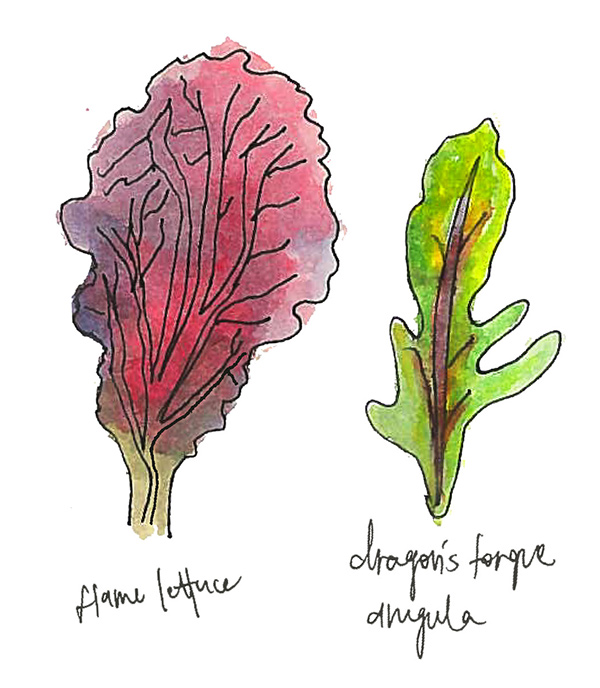
This fall saw the sprouting of the Getty Salad Garden, an installation of organic heirloom vegetables and salad greens growing in raised beds on the Getty Center grounds. The Getty Salad Garden engages with the history of art and food explored in two current exhibitions: The Edible Monument: The Art of Food for Festivals and Eat, Drink and Be Merry: Food in the Middle Ages and Renaissance.
![]() The Getty Salad Garden is a riveting concoction not only of smells and tastes, but also of colors. One of the garden’s highlights is the lettuce bed, packed with delicious germinating salad greens. Who knew that there were so many variations of salad greens? The name lettuce comes from the Latin word latuca, which is linked to lac (milk), referring to the milky sap that oozes out of the cut stem. Lettuce was popular with both the Egyptians and the Romans, who grew it for its seed oil, edible leaves, and nutritional properties.
The Getty Salad Garden is a riveting concoction not only of smells and tastes, but also of colors. One of the garden’s highlights is the lettuce bed, packed with delicious germinating salad greens. Who knew that there were so many variations of salad greens? The name lettuce comes from the Latin word latuca, which is linked to lac (milk), referring to the milky sap that oozes out of the cut stem. Lettuce was popular with both the Egyptians and the Romans, who grew it for its seed oil, edible leaves, and nutritional properties.
These lettuces certainly look as different as they taste. I took an interest in making these illustrations, because sitting in the garden and observing how the light falls on each individual leaf is quite a spectacular experience. Because the illustrations don’t fully capture the way your eyes observe the delicate variations of color while the changing light falls on the garden, I took liberties with the color palette.
The dragon’s tongue arugula has dark green lobed leaves with a purplish-red vein running through the middle. At the height of noon, the flame lettuces’ ruffled leaves are distinctly bright red like a flame, but at dusk the leaves seem to turn burgundy with darker green hues.

Of all the lettuces, my favorite is the flashy butter oak. Not only does it have the texture of a butterhead lettuce, it tastes divine, packed with succulent flavors. The best part of the flashy butter oak is the speckles of color distributed randomly around its oak-shaped leaf. At different times of day, you can see hues of red, purple, yellowish green, and an occasional pop of orange.



The Getty Salad Garden is not only a space for learning about new plants, but also a contemplative place to sit and watch the colors of the garden come alive before your eyes. Our open hours are 12pm to 1pm on Tuesdays and Wednesdays through December 18. When you’re here, don’t be in a rush to leave, the plants will certainly share their splendor and variety with the attentive visitor.
________
About the Salad Garden




Comments on this post are now closed.